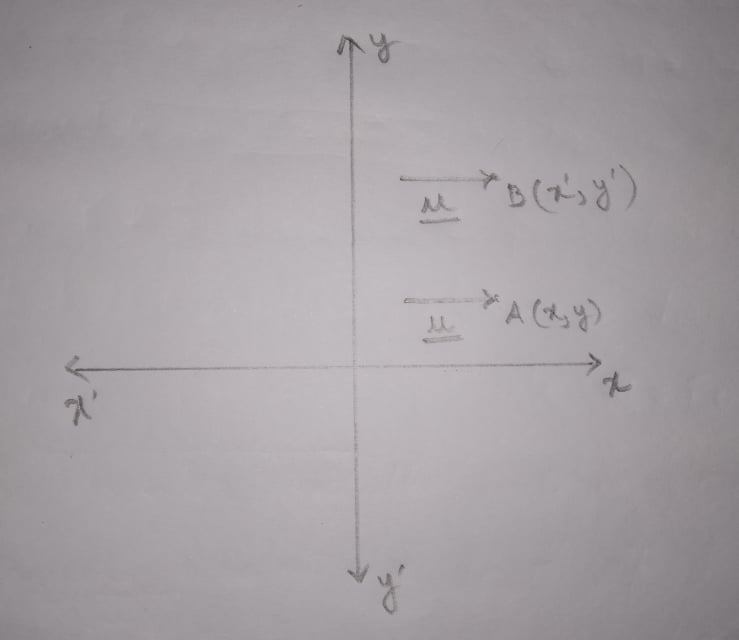According to 3Blue1Brown, as long as the magnitude and direction of a given vector are the same, even if we move it around in the Cartesian coordinate system, it is still the same vector.
Here, we have a vector $\underline{u}$ that is acting in a point $A(x,y)$. If, however, we shift it upwards by keeping the magnitude and the direction the same, it is no longer acting on the point $A(x,y)$, rather on the point $B(x\prime,y\prime)$.
If two objects $P$ & $Q$ were at points $A$ & $B$, then shifting $\underline u$ from its initial position would change the meaning of the initial representation.
If $\underline u$ were at the initial position, it would have meant that $P$ is experiencing a force, if $\underline u$ were a force vector. But now that $\underline u$ has been shifted, the representation means that $Q$ is experiencing the force. So, is it correct that we can shift vectors any which way?

